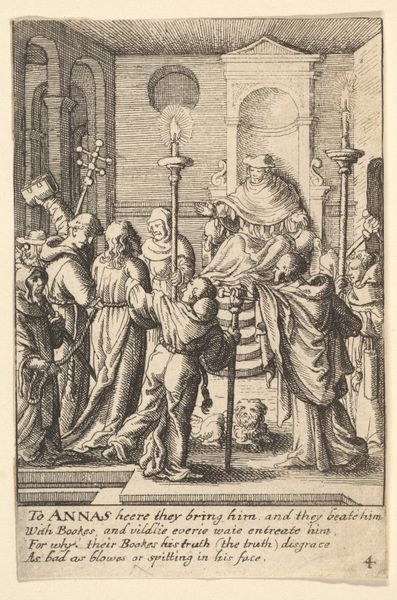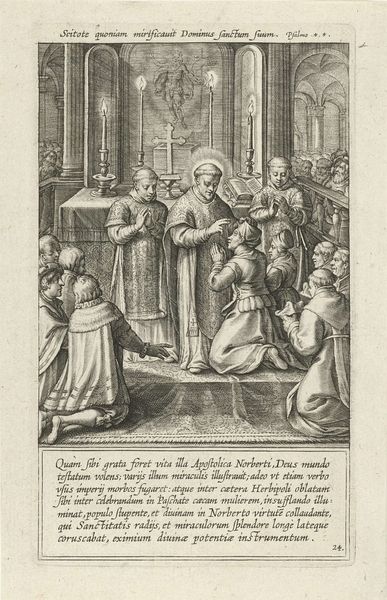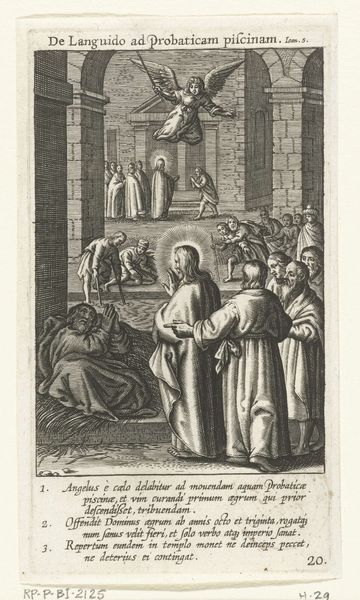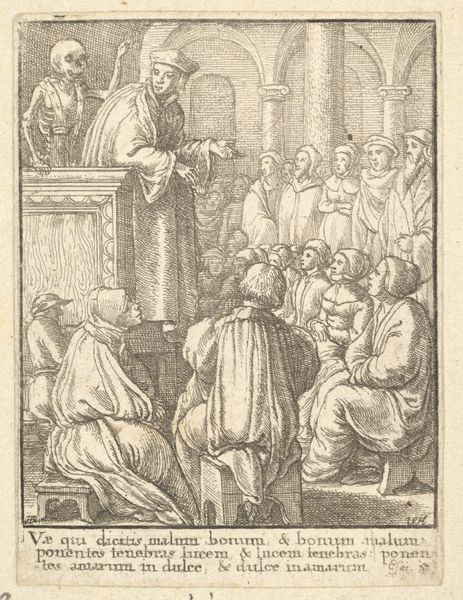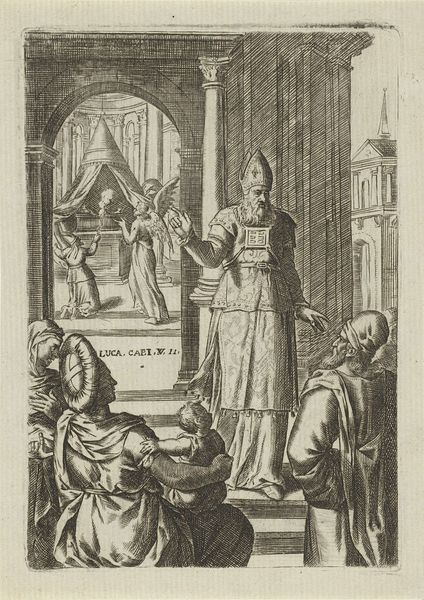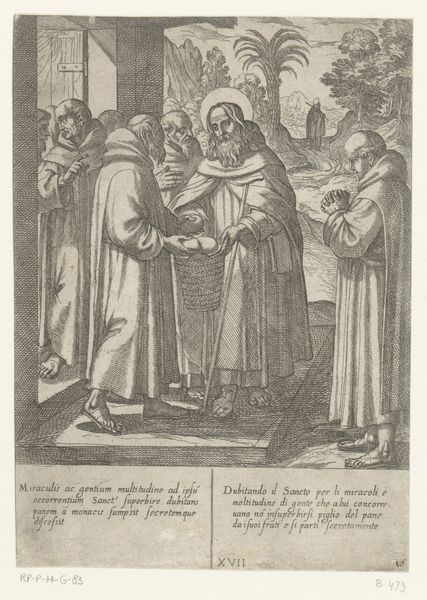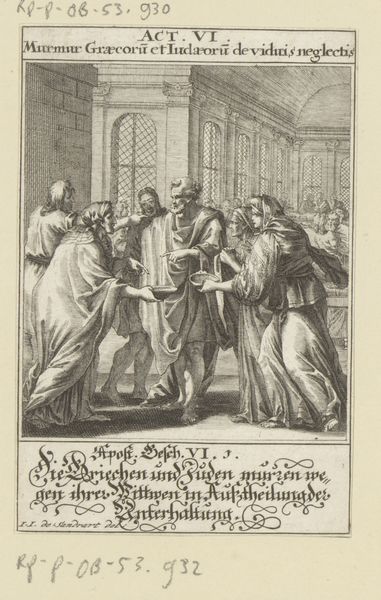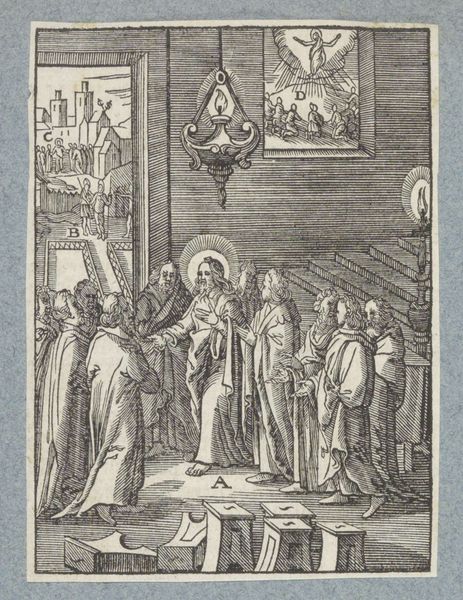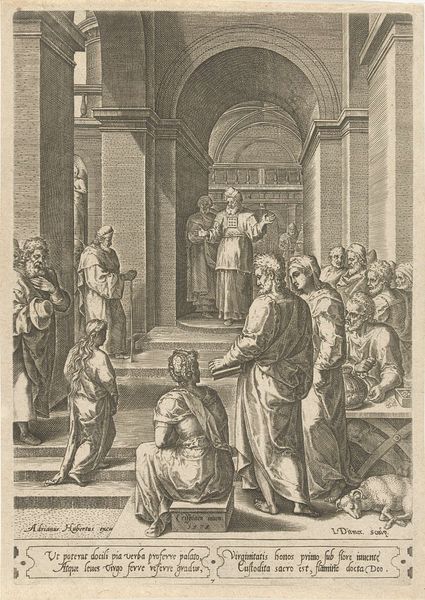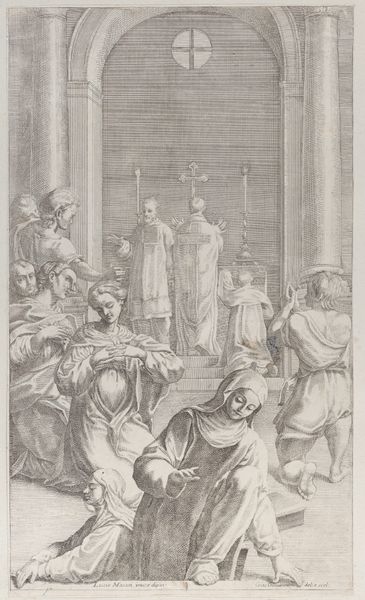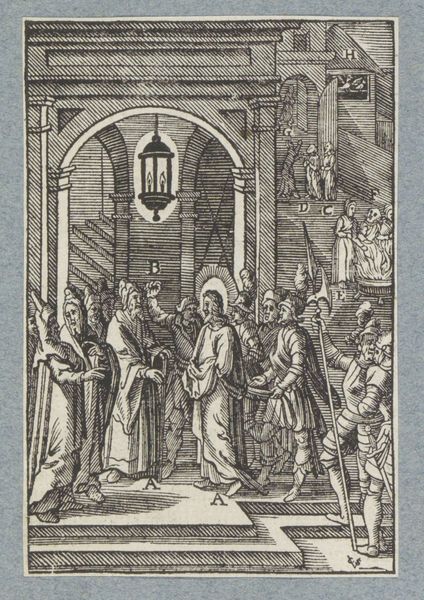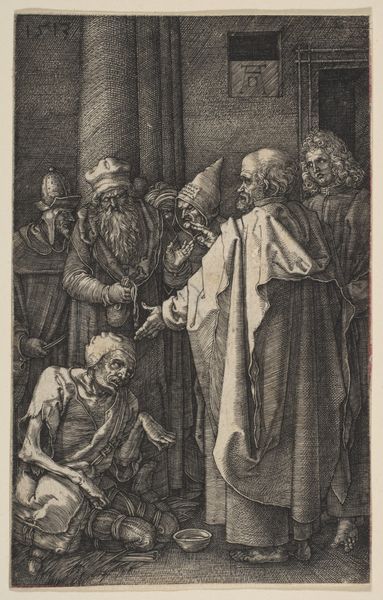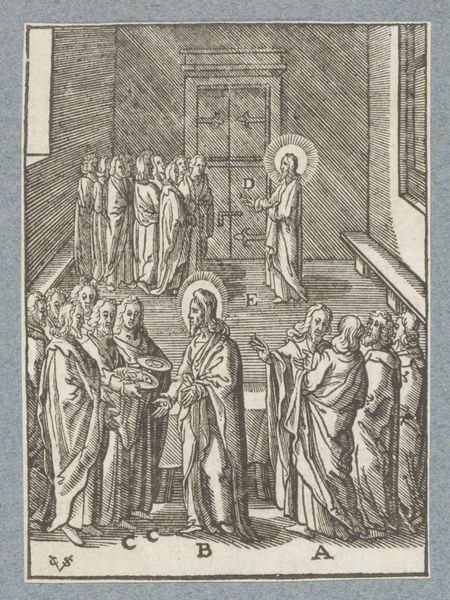
print, engraving
#
baroque
# print
#
history-painting
#
engraving
Dimensions: width 54 mm, height 90 mm
Copyright: Rijks Museum: Open Domain
Curator: The first impression this artwork evokes is one of somber elegance; it's all about the careful cross-hatching, creating gradations from the figures' ethereal robes to the stone architecture in the background. Editor: Indeed. What you are seeing is a print entitled *Jozefs roede in bloei* ("Joseph's Rod in Bloom"). Made sometime between 1581 and 1633, the engraving is by Theodoor Galle. It currently resides here at the Rijksmuseum. We can discern a pivotal scene in the life of the Virgin Mary, specifically the moment when Joseph is chosen to be her husband, a decision indicated by his rod miraculously sprouting flowers. Curator: It's fascinating how the artist frames Mary within a visual hierarchy dominated by men – Joseph, the officiating priest, the observers. The symbolism of Joseph's blossoming rod also begs exploration: who has the power to bestow a miracle of divine fertility and whose potential fertility is ignored or left in the background? Considering this imagery from a feminist perspective brings these implicit hierarchies into sharper focus. Editor: These depictions were intended to reinforce social norms within a highly structured religious framework. Examining Galle's *Jozefs roede in bloei* within its historical context shows us the role prints played in disseminating these messages and reinforcing the prevailing ideologies about marriage, sanctity, and divine authority. Curator: True, these power dynamics within art do shape societal attitudes and contribute to lasting patriarchal structures that we still wrestle with today. Editor: Absolutely. These engravings helped spread the Catholic Church's messaging through affordable, portable imagery. We can consider the market this art was destined for to comprehend the narrative choices. Curator: Yes, precisely. This understanding can help challenge and reimagine those same visual narratives toward a more inclusive representation. It prompts vital dialogues that enrich how we engage with this piece now. Editor: Agreed. Bringing our insights, in its time an example of cultural power, has led us to new vantage points now that shed some new light and understanding for all of us today.
Comments
No comments
Be the first to comment and join the conversation on the ultimate creative platform.
